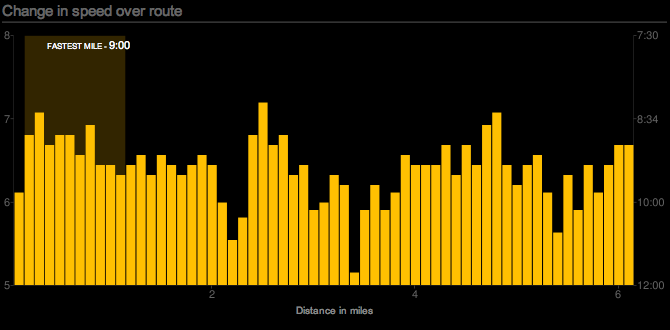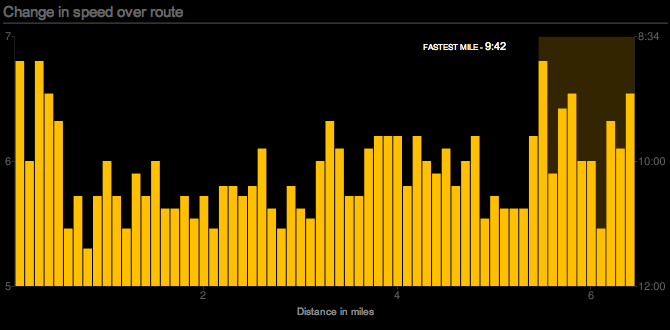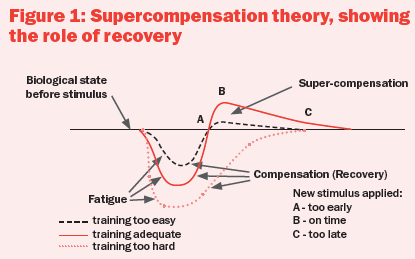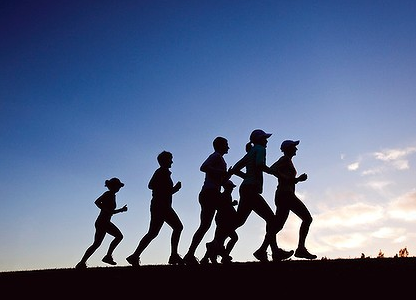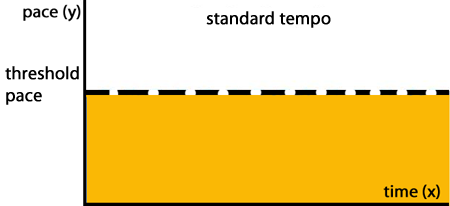How New Running Shoes Can Affect Your Running Gait
Three weeks ago, I bought a new pair of running shoes. The same exact pair I bought last June. I’ve logged about 470 miles on my old pair so I figured it’s time I move on! Although, I’ve been having some problems breaking them in and it’s really hard to tell if the slight pain on my left anterior ankle is due to overtraining or if it’s the shoe. So, I tested it and alternated my running with both pairs.
On average, running in my old shoes puts me around a 9:00/mi pace or faster, whereas running in the new pair feels about a minute and a half slower. I also tend to “shuffle” with the new pair – taking shorter strides that somewhat fall between an uncomfortably fast walk and a decent jog – whereas with the old shoes, I’m in danger of overstriding because, I’m so comfortable pushing my speed in them that I’m not really paying as much attention to my heel strike. Note: I still get a slight aggravation on my anterior ankle even with the old shoes, but it doesn’t last as long during my run.
The problem I’ve noticed with switching to new pairs of running shoes, even in the past, is that it changes my running gait a little, every time I switch. Part of it is due to caution – I’m not the type to run hard on a new pair of shoes. Part of it is also because new pairs of running shoes have a tendency of adding more support in every succession.
I came across this pretty cool article on how running shoes have changed from the 30’s to the 90’s. Interestingly, it starts with minimalist shoes and adds more and more cushioning and support over the years. The increase in the number of shoes that provide more “structural support” probably contributed to the heel striking trend.
Why did shoe makers start making cushioned shoes if it ultimately led to poor form?
- Beginner runners picked up the sport. Those starting out tend to mimic their walking gait before developing a running gait. When we walk, we strike our heel first.
- Shoe companies noticed that with the masses participating in the sport, foot injuries increased in the old running shoes. To compensate for the jump in the number of heel striking runners, they starting padding the shoes.
- The 70s and 80s was big on the discovery of ground reaction forces (GRF): a force exerted by the ground in response to the forces a body exerts on it. You can read more about the biomechanics here.
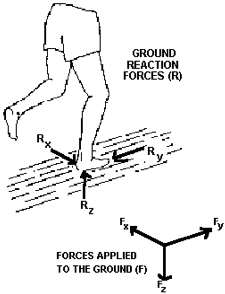
This is a very quick summary on a long ongoing topic, but if you’re interested in the details (which is awesome!), this entry from Science of Running covers what you need to know.
So, going back to my dilemma… perhaps, the additional support in my new shoes aren’t helping me very much. But, I’ve also run more than 30 miles in my new shoes already and it’s only getting better each time. I did my first 10k on them 2 days ago and, compared to my last 10k, the difference isn’t enough to convince me to ditch the new pair.
10k with the old pair (avg pace 9:22/mi – completed in 58:05)
10k with the new pair (avg pace 10:09/mi – completed in 1:05:37)
I figured that 7 minute time differential will probably go down once I’ve put at least 50 miles in my new shoes. For the time being, I think I’ll keep alternating between my pairs to ease myself in.

